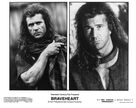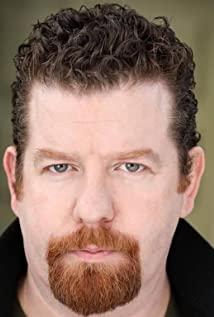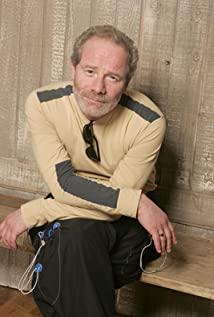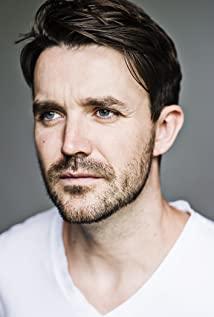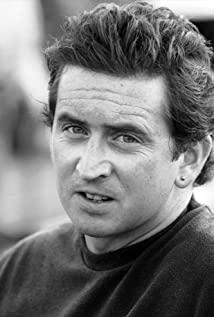At the beginning of the film, a voice-over opened the sect clearly stated: "History thinks I am lying, but history is written by the man who killed the hero." This means that although William Wallace (?-1305) is a real historical person, But the film does not strictly guard historical records. In other words, the genre of this film is not a biopic of historical figures, but a typical Hollywood legendary heroic beauty. If we compare this Hollywood myth with real history, we can deconstruct how Hollywood dreams and entertains the audience.
In the 13th century, the relations between the two neighboring countries of Scotland and England were relatively harmonious, and their rivalry began at the end of the century. In 1286, King Alexander III of Scotland had no children after his death. The throne passed to his granddaughter Margaret. The coveted King Edward I took the opportunity to let his son marry him. Margaret died in 1290, and 13 nobles with royal blood began a battle for the throne. The most powerful sixth kings, Robert Bruce and John Ballio, were evenly matched, and the transitional government asked the King of England for arbitration. "Long Legs" thought the latter was obedient, and made him the king of Scotland in 1292, and he regarded himself as the sovereign state. Balio couldn't bear the frequent political interventions of the "Long Legs", and in 1296 he made an alliance with the "Long Legs" opponent, the French King. "Long Legs" then invaded heavily, defeated the Scottish Army in Dunbar, captured Ballio and proclaimed himself King of Scotland. In the name of the truce, he tricked the nobles into a meeting, took the opportunity to execute the opponents, and forced the remaining nobles to swear allegiance. The brutality of the "Long Legs" provoked national hatred, and the resistance of the Scots was surging, and Wallace was an outstanding representative among them. Wallace led the civilian rebels and defeated the British in Stirling on September 11, 1297, and Scotland was almost independent. In December of the same year, Wallace was knighted and protector of the country by the Scottish aristocracy, governing the country in the name of King Balio of Scotland. However, out of consideration for their own interests, the nobles did not really support him. On July 22, 1298, "Long Legs" assembled a heavy army and wiped out Wallace's main force in Folkok. After that, Wallace could only deal with the British army in the form of guerrilla warfare. On August 5, 1305, Wallace was arrested by the British army for betrayal by a traitor. Soon after he refused to submit to "Long Legs", he was tortured and executed in London. The resistance of the Scots kept coming and going. The eighth Robert Bruce was once the main supporter of Wallace, and then he followed the family to "Long Legs". When his father died in 1304, he provoked a big beam. In 1306 he raised the anti-British flag and was championed as the King of Scotland (known as Robert I in history). Under the "Long Legs" crusade, he repeatedly fought and lost, and his family was ruined. In 1307, after the death of "Long Legs", the other side came around and completely defeated King Edward II (the prince in this film) in Bannockburn in 1314. So far Scotland regained its independence, and he also became a national hero. As an independent kingdom, Scotland has existed for nearly 300 years. After the death of Queen Elizabeth of England in 1603, he had no heir. As a sideline, King James VI of Scotland also led the British throne (British name James I). Because the snake swallows the elephant, Scotland annexed England. Today's Queen of England is still its descendant. There are still many Scots who want independence, especially
The official history of Wallace's record is very simple, mainly from the period from his rebellion in 1296 to his murder in 1305, and he expressed it from the standpoint of Britain. There are few records about his early experience and personal life. In the 15th century, the bard Blind Harry created the legendary epic "The Song of Wallace" with the help of the descendants of Wallace, and most of the narration of later generations originated from this epic. With the spread of the epic, Wallace gradually became the national hero of Scotland. People built a huge monument for him in Stirling in 1861. After the film was released, it became a tourist attraction in Scotland. According to epic legends, Wallace was born as a small lord, and his father and brother were murdered for resisting the British. After Wallace's rebellion, the newlyweds who lived in the castle were killed by the Sheriff of Lanark, England in 1297. Wallace entered the castle at night to bloodbath the Sheriff’s residence. The director of the film referred to "The Song of Wallace", but it was cut and arranged according to his own imagination. Therefore, the plot of the film is different from the historical records and the "Song of Wallace".
The image of Isabella is even more outrageous. In history, she was married from France to England three years after Wallace's death, and her son (Edward III) was born seven years later. He became the Queen of England. Because of his French royal blood, he coveted the throne of France and provoked the Hundred Years War between England and France. How could he be after Wallace?
The film's presentation of the complicated historical background at the time is also quite fallacious. Wallace's rebellion was originally out of hatred against the brutal invaders, and then a bishop ordered him to play the banner of "restoring the country's independence and welcoming the restoration of King Balio". The "freedom" that Pian Zhonghua RAAS has repeatedly called out actually refers to independence. However, the restoration is contrary to the demands of the Bruce family to fight for the king, so he switched to "Long Legs" and remained alert to Wallace. Of course this is the tendency of the older generation, and Robert Jr. supports independence. He was later called the queen, but he still did not regret being beaten by "long legs" until he finally won his independence. The most absurd part of the film is that after Wallace was named the Protector of the Country, Ballio fought for the throne with the Bruce family. The official history is that Wallace exercised power in the name of the imprisoned King Balio. The movie's joking is not only that, Wallace's two fate-determining battles are also inconsistent with history. In the famous Battle of Stirling Bridge in history, the real situation was that the British army was raided by Wallace when they were lined up on the muddy road and passed the narrow wooden bridge. As a result, it was in chaos and was wiped out by the rebels with few weapons. In the Battle of Folkok, "Long Legs" used his famous assassin, that is, the British longbowmen and heavy cavalry that appeared in the battle of Stirling in the film. In addition, the British army was strong, and the Scottish nobles turned, and Wallace was almost completely wiped out in the end. The film has been changed in this way because it is more legendary.
The two major symbols of Scottish style shown in the film are also inconsistent with history: bagpipes were introduced to Scotland in the 15th century, and Scots men did not wear checkered skirts until the 17th century. In the film, the Scottish flag with a white cross on a blue background will appear until Wallace's death. Without these codes, how can we reflect the Scottish style? Fortunately, this is a legendary film, not to mention jokingly.
To this end, Anglo-American historians published three serious academic works: "William Wallace: Real Men and Myths" (2001), "Following the Footsteps of William Wallace" (2002) and "Military, Brave Heart and Scots-The Distortion of the Image of Scotland in Hollywood Movies" (2003).
Despite all the criticisms, Hollywood has carefully crafted this epic epic of heroes and beauties based on its tried-and-tested narrative strategy. The global sensational influence of this film shows that the Hollywood model is still very viable.
The secret of Hollywood filming lies in the heart-wrenching plot, the shining stars and the magnificent scenes laid out with high investment, which are fully reflected in this film. In the plot, the director arbitrarily tailored the history and swayed a little bit, weaving a legend of iron, blood and tenderness that the audience expected. The strong contrast and collision of heroes and tyrants, loyalty and betrayal, good strategies and conspiracies, pride and nasty, all kinds of good and evil, beauty and ugliness, make the film more ups and downs and attractive. The meticulous conception and meticulous depiction of war and love make the film both rigid and soft, and relaxed. In "Song of Wallace", his wife was killed because of Wallace's rebellion, and the film Zhonghua Lace rebelled because his wife was humiliated and murdered. This change further strengthened the film's dramatic tension. In order to tighten this tension, the choreographer also designed the grown-up Wallace to be an obedient citizen who only wanted to have a family and children and live in peace. But the brutality of the British army completely shattered his dream. The more mournful and desolate the love with Meilun, the stronger the explosive force it accumulated. The superposition of national hatred and the death of love finally caused the tension to reach its extreme point and exploded. In order to highlight the universal meaning of love and hatred, the director also introduced the ancient aristocratic power of the first night, and designed a plot where the humiliated husband greedily love the aristocratic power of the first night.
In order to mediate the cruelty of the war theme, the film performed a more legendary romance. The prince and concubine played by French leading actress Sophie Marceau is endowed with the freedom and romantic personality of contemporary French. Her father-in-law was cruel and violent, and her husband was incompetent and indifferent. What made her particularly resentful and unbearable was that he was still a homosexual and fooled around with his favorite Philip. Once she met Wallace, who was vigorous, righteous, rugged and elegant, she couldn't help but feel in love. She briefed the news twice, in addition to agreeing with Wallace's demands for freedom, she was also driven by emotions. And she understands that because of the unspoken rules of nepotism, the British royal family dare not treat her, the French princess. So not only did she dared to dedicate herself to Wallace, but she also expressed her father and son with "long legs" in revenge. These bold actions by her are obviously out of the choreographer's need to entertain contemporary audiences, and women in the Middle Ages may not have such awareness.
In order to vividly express the abstract emotions of the characters, or to visualize the subject of the film, the director used the props commonly used in Hollywood-tokens. The token in this film is a handkerchief. When Wallace and Meilun got married in secret, before the priest witnessed their marriage, Wallace took out a Scottish checkered scarf and wrapped it around their folded hands. Then he gave the long scarf to Meilun, and Meilun gave him a square scarf woven with purple thistle flowers. This is not only a token of love, because the square and purple thistle are both symbols of Scotland, they also signify the love for the motherland. When Meilun was brutally killed and Wallace succeeded in revenge, he came to the victim and picked up the square scarf left by Meilun. After Meilun's funeral, in the dead of night, Wallace took out the purple thistle handkerchief and stared at it for a long time. These two tokens express his deep feelings for Meilun, and at the same time imply his hatred for the enemy. After Foucock's defeat, Wallace discovered that Robert, who vowed to join forces with him to fight the British, appeared in the "Long Legs" camp! Feeling betrayed, Wallace fell to the ground in pain. Robert hugged him on the horseback of his comrade-in-arms to escape the danger, then turned around and picked up Wallace's lost purple thistle handkerchief. At this time, for Robert, the purple thistle flower symbolized infidelity to the motherland and betrayal to friends and oaths, which made him suffer. Later, when Robert sent someone to discuss with Wallace and discuss again to join forces in the resistance against Britain, the visitor brought out the token of Robert entrusted-purple thistle handkerchief. In this way, the purple thistle flower handkerchief is transformed into an oath to the motherland. When Wallace was finally pushed onto the guillotine, he held the purple thistle handkerchief tightly in his hand. At this time Meilun's phantom appeared in the crowd on the execution ground, smiling at Wallace. This was obviously out of Wallace's fantasy, she came to pick him up, and the two would never be separated. Here, the purple thistle flower means Meilun, and it echoes the fresh purple thistle flower that Meilun gave him when he was a child, completing a reincarnation. The knife fell to death, and the towel floated to the ground. It was Robert again who picked it up again. He stared at the handkerchief stained with Wallace's blood, and immediately treasured it. The handkerchief also added the meaning of inheriting Wallace's unfinished will. At the end of the film, Robert took out his handkerchief from his sleeve and stared again at the ceremony of taking office as the King of Scotland. At this time, to him, the purple thistle handkerchief not only symbolized the suffering motherland, but also meant Wallace's call. After putting the handkerchief back, he immediately announced loudly that he would fight for the independence and freedom of Scotland like Wallace. This handkerchief is given different meanings on different occasions, but it does convey the strong emotional message of the holder at that time, which is worthy of the audience's reflection.
The film also has profound implications for the use of the Scottish bagpipe. The opening shot crosses the vast mountain lakes, and the bagpipe music in the background confesses that this is in Scotland, and the desolate music also indicates that a tragic story is about to unfold. On the night of Wallace's father and brother's burial, a bonfire was lit on the cemetery and the sound of bagpipes sounded. The uncle told Wallace that the bagpipes and music were forbidden. People use traditional instrumental music not only to express their memorial to the martyrs, but also to convey their resistance to tyranny. There are many other places in the film about the polysemous application of bagpipes like this.
As a heroic epic, the biggest highlight of this film is the magnificent war scenes, which is exactly where Hollywood's advantage lies. The film cost 60 million US dollars, used more than 3,000 extras and more than 1,500 war horses, and set up locations in Scotland and Ireland. The high investment has created a magnificent war scene, especially in the two battles between Stirling and Foucock, the fighting of thousands of troops is indeed shocking. Sophisticated medieval weapons, earth-shattering shouts, swords and shadows fight against each other, creating a majestic and mighty war momentum with great pride, which is quite visually impactful, and is worthy of Hollywood's masterpiece. The large number of bloody and realistic killing scenes in the film also left a deep impression on people. On the one hand, it strengthened the realism of the film, and on the other hand, it also reflected the Hollywood production skills that slammed into the ground with a thunderous force, drawing a picture for the whole film. The end of the anger swallowing mountains and rivers. This legendary ending is endlessly appealing, and it is indeed a magical pen for the director.
View more about Braveheart reviews





